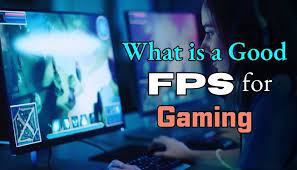Ever fired up a game, pumped for some epic action, only to be met with jerky movements and screen tearing? Ugh, the struggle is real! But fear not, fellow gamer, for the answer lies in understanding the elusive FPS.
No, not First-Person Shooter (although those games tend to be very FPS-sensitive!), but Frames per Second. This little number holds the key to smooth; responsive game play and can turn leggy frustration into pixel-perfect bliss. So, buckle up, grab your controller (or keyboard!), and let’s dive into the world of FPS speed test !
it’s a series of still images flipping by so fast they create the illusion of movement. Well, video games are the same, except the “images” are called frames. The more frames displayed per second, the smoother the experience. Think of it like flipping through a flipbook: the more pages you flip, the smoother the animation.
So, what’s a “good” FPS? It’s not a one-size-fits-all answer. Here’s the breakdown:
Sub-20 FPS : Yikes! This is like watching a slideshow. Unplayable for most, unless you have the patience of a saint (or maybe you’re playing a turn-based strategy game?).
20-30 FPS: Borderline territory. Some might be okay with it, especially in slower-paced games. But in fast-paced action, it can feel sluggish and unresponsive.
30-45 FPS : Playable for most, but not ideal. You might notice some choppiness, especially during intense moments.
45-60 FPS : Ah, the sweet spot! Smooth game play for most people, offering a noticeable improvement over lower FPS. This is the holy grail for many casual gamers and console players.
60-90 FPS : Super smooth! Especially noticeable in fast-paced games, offering a competitive edge and an immersive experience. PC gamers often strive for this range.
90-144 FPS : “Criminally smooth,” as some say! Feels even smoother than 60 FPS, with minimal to no perceived lag. Ideal for competitive gamers and those with high-refresh-rate monitors.
144-200 FPS : The smoothest of the smooth! You’re probably not even human anymore at this point, just pure gaming reflexes.
But wait, there’s more! FPS isn’t just about a single number. Here are some other factors to consider:
Stability : A consistent 30 FPS is better than a fluctuating 60 FPS. Dips below your target FPS can be jarring and disrupt game play.
Genre : Fast-paced games like shooters benefit more from high FPS than slower-paced games like strategy titles.
Hardware : Your device’s capabilities play a big role. A high-end gaming PC can handle higher FPS than a budget laptop.
Personal preference : Some people are more sensitive to frame rate than others. Experiment and see what feels best for you!
Want to test your FPS? Easy! Here’s where that handy fps speed test keyword comes in. Search online for “fps test” and you’ll find various websites and tools that run your system through its paces and display your FPS in different scenarios. This helps you see how your device performs and identify any potential bottlenecks.
Remember: The perfect FPS is a personal journey. Experiment, tweak settings, and find the sweet spot that delivers the smoothest, most enjoyable gaming experience for you. Now go forth, conquer those quests, and dominate the competition (or just relax and enjoy the beautiful scenery)!


 Welcome to Infinitive Creative where we share information related to Business, Tech and More. We’re dedicated to providing you the very best information and knowledge of the above mentioned topics.
Welcome to Infinitive Creative where we share information related to Business, Tech and More. We’re dedicated to providing you the very best information and knowledge of the above mentioned topics.